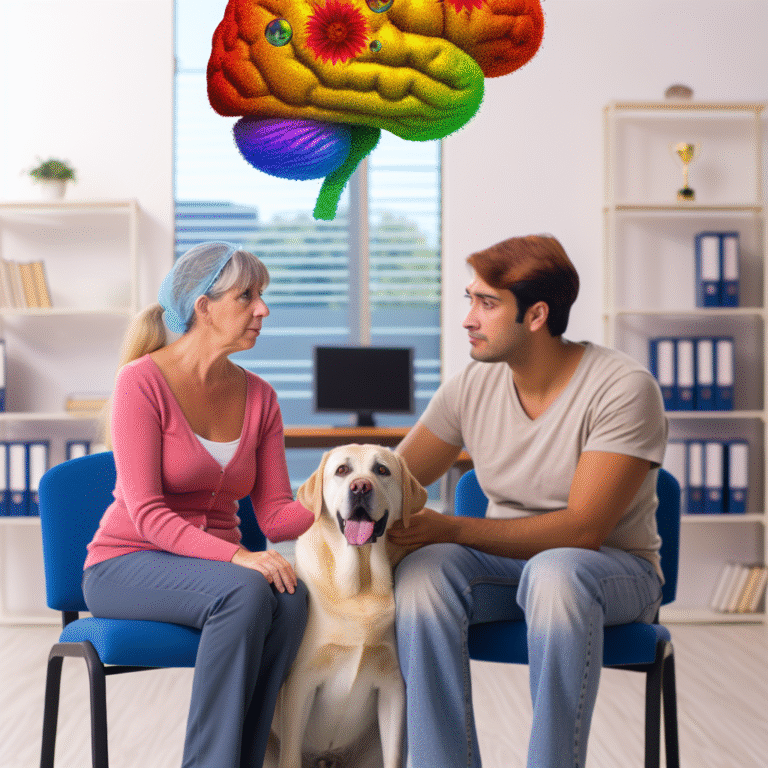
Beyond the Surface: How Trauma Leaves a Mark on the Brain and Influences Mental Health
Introduction
In a world where mental health conversations are growing louder, understanding the hidden mechanisms of trauma is essential. Many people know that trauma can have an impact on mental well-being, but what happens beyond the surface? Trauma doesn’t just create emotional scars; it alters our brain’s structure and function, significantly influencing how we think, behave, and interact with the world around us. Understanding these complexities can lead to improved therapeutic practices, self-awareness, and ultimately, healing.
In this article, we will explore how trauma reshapes the brain, the profound effects it has on mental health, and what we can do to reclaim our lives from its lingering impact.
The Neuroscience of Trauma
How Trauma Affects Brain Structure
When discussing how trauma leaves a mark on the brain, one must consider how it reshapes neural pathways. The brain is incredibly adaptable but can also be fragile. Trauma activates the amygdala, the brain’s alarm system responsible for the fight-or-flight response. This overactivity can lead to changes in other areas involved in memory and judgment:
- Hippocampus: Involved in forming new memories.
- Prefrontal Cortex: Responsible for reasoning and decision-making.
Case Study: The Impact of Childhood Trauma
A notable case study illustrates this vividly. Researchers followed children aged 6-12 who experienced severe trauma, such as abuse or neglect. Neuroimaging revealed that these children had a smaller hippocampus compared to their peers. This decline in size was associated with memory deficits and emotional regulation issues.
Analysis: This study underscores the concept that trauma affects brain development, particularly in childhood, making it a crucial time for intervention.
Hormonal and Neurotransmitter Systems
Another dimension of understanding trauma is recognizing how it impacts our hormonal and neurotransmitter systems. When confronted with stress, the body releases cortisol, a hormone that, in moderation, helps us cope but becomes detrimental in excess:
| Hormone/Neurotransmitter | Function | Impact of Trauma |
|---|---|---|
| Cortisol | Stress response | Excess leads to anxiety, depression |
| Serotonin | Mood regulation | Low levels linked to mood disorders |
| Dopamine | Reward and pleasure | Dysregulation may cause addictions or motivation issues |
This dichotomy illustrates how our neurobiology can be fundamentally altered by trauma—a crucial element in how trauma leaves a mark on the brain and influences mental health.
Psychological Consequences of Traumatization
PTSD and Its Complexities
Post-Traumatic Stress Disorder (PTSD) is one of the most recognized psychological consequences of trauma, characterized by intrusive thoughts and avoidance behaviors. The connection between how trauma leaves a mark on the brain and PTSD is significant.
Case Study: Veterans and PTSD
A longitudinal study of veterans returning from combat zones revealed high rates of PTSD. Through interviews and psychological assessments, researchers found that nearly 30% of these veterans met the criteria for PTSD. Neuroimaging showed that veterans exhibited heightened amygdala activity, which correlated with symptoms like hyper-vigilance and emotional dysregulation.
Analysis: This study highlights how trauma-induced changes in brain structure can manifest as PTSD, illustrating the urgent need for therapeutic interventions.
Depression and Anxiety
Further, trauma is a significant predisposing factor for developing anxiety disorders and depression. The heightened cortisol levels observed after a traumatic event play into this. Those who have experienced trauma may find themselves in a vicious cycle:
- Trauma exposure increases vulnerability to depression and anxiety.
- These conditions can further exacerbate the effects of trauma on the brain, leading to more severe symptoms.
The Brain’s Resilience: Neuroplasticity
The Power of Neuroplasticity
One of the most hopeful aspects of neuroscience is neuroplasticity, the brain’s ability to adapt and reorganize itself throughout life. This adaptability is crucial to healing and overcoming the effects of trauma.
Mechanisms of Neural Healing
Therapeutic practices that engage and stimulate neuroplasticity are paramount in reversing the trauma’s damaging effects. Strategies include:
- Mindfulness-Based Stress Reduction (MBSR)
- Cognitive Behavioral Therapy (CBT)
- EMDR (Eye Movement Desensitization and Reprocessing)
These methods can help create new neural pathways and rewire the brain, demonstrating that while trauma leaves its mark, recovery is not only possible but can also lead to growth and insight.
Integrative Approaches to Healing
Holistic Interventions
To combat the lasting effects of trauma, integrating various healing modalities can create a more comprehensive approach:
- Psychotherapy: Provides a safe space for exploration.
- Somatic Experiencing: Focuses on bodily sensations associated with trauma.
- Yoga and Mindfulness: Encourage body-mind connections and stress relief.
Case Study: Trauma-Informed Yoga
Research has shown that participants in trauma-informed yoga classes report reduced anxiety and increased emotional regulation. A study tracked individuals who had experienced sexual trauma and participated in a structured yoga program. The results indicated a significant decrease in PTSD symptoms, supporting the effectiveness of mind-body interventions.
Analysis: This case reinforces the idea that trauma can indeed be addressed effectively, not just through traditional talk therapies but also through holistic, integrative methods.
Fostering Resilience
Developing Coping Mechanisms
Understanding how trauma leaves a mark on the brain and influences mental health can also drive us toward resilience. Building coping mechanisms can ameliorate the impact of trauma. Some methods include:
- Building Support Networks: Quality relationships contribute to emotional well-being.
- Engaging in Creative Expression: Art and writing can provide catharsis.
- Routine Physical Activity: Known to improve mood and reduce anxiety.
Education and Awareness
Raising awareness about trauma’s effects can empower individuals and communities. Schools, workplaces, and families should be proactive in educating about trauma’s impact, fostering environments where discussions are welcomed and destigmatized.
Conclusion
In sum, trauma undoubtedly leaves a mark on the brain, influencing mental health in profound ways. It is vital to move beyond the surface to grasp the intricate relationship between trauma and brain function. By understanding these elements, we can better approach healing and support those in distress, giving hope for recovery.
Remember, healing is not linear, and everyone’s journey is unique. Embrace the process, seek support, and be open to growth. The scars of trauma can transform into stories of resilience and strength.
FAQs
1. What is trauma?
Trauma is an emotional response to a distressing or life-threatening event, such as physical harm, emotional abuse, or natural disasters.
2. How does trauma affect the brain?
Trauma can alter brain structures, particularly areas involved in emotional regulation, memory, and decision-making. Heightened amygdala activity is common, leading to anxiety and fear responses.
3. What are common symptoms of PTSD?
Symptoms of PTSD can include flashbacks, nightmares, severe anxiety, and uncontrollable thoughts related to the traumatic event.
4. Is it possible to recover from trauma?
Yes, recovery from trauma is possible through various therapeutic interventions, including therapy, mindfulness practices, and social support.
5. How can I help someone who has experienced trauma?
Listen without judgment, encourage them to seek professional help, be patient, and validate their feelings. Respecting their boundaries is crucial.
By understanding trauma’s deep impact and learning how to nurture resilience, we can create a healthier, more supportive society for everyone affected. Remember—you are not alone, and help is always available.













